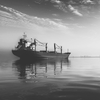The National Transportation Safety Board have determined that the failure of a Coast Guard coxswain to operate a patrol boat at a safe speed in a restricted area caused the collision between the patrol boat and the small passenger vessel Bayside Blaster in Biscayne Bay, Florida. The Board also found that contributing to the accident was the lack of adequate Coast Guard oversight of nonstandard boat operations.
On January 12, 2002, the 24-foot Coast Guard patrol boat CG242513, with two crewmembers on board, was on a routine recreational boating safety and manatee-zone patrol in Biscayne Bay, Florida, when it collided with the small passenger vessel Bayside Blaster, carrying 2 crewmembers and 53 passengers. Both Coast Guard crewmembers were ejected from their boat. The patrol boat continued running, circled to port, and struck the Bayside Blaster again. The unmanned patrol boat continued to circle for 10 to 15 minutes, striking a moored recreational boat two times and pilings near the shore. Five passengers on board the Blaster reported injuries. As a result of the accident the Coast Guard patrol boat was declared a total loss. Both the Bayside Blaster and the recreational boat sustained substantial damage.
One of the major issues the Board highlighted in its report is the operation of both the Coast Guard patrol boat and the Bayside Blaster. The Board noted that the coxswain of the Coast Guard patrol boat was operating the vessel in excess of the Florida speed restrictions for no safety or law enforcement reason in a no-wake, manatee-protection zone. Even if there were no speed restrictions, the coxswain's speed was imprudent for the prevailing conditions of darkness, background lighting, and potential for encountering passenger and recreational vessels in the area of the accident, the Board noted. Safety Board investigators pointed out that the lack of Coast Guard speed restrictions for conducting routine patrols allowed coxswains too much latitude in selecting patrol speeds, which could endanger other boaters as well as Coast Guard crewmembers.
However, in the report, the Board noted that the Bayside Blaster was on an appropriate route for its service, and the master was operating his vessel at a safe and prudent speed for the conditions and circumstances. Furthermore, the master and the deckhand of the Bayside Blaster were maintaining a proper lookout. The Coast Guard patrol boat's excessive speed, combined with its sudden appearance close to the Bayside Blaster, precluded the master of the Bayside Blaster from being able to take any effective action to avoid the collision, the report states.
The other issues including Coast Guard oversight of routine patrols, kill switch operation on Coast Guard nonstandard patrol boats, and Coast Guard safety oversight of small passenger vessels in Miami are detailed in the final accident report.
The Safety Board acknowledged that the Coast Guard has made some positive modifications to its small boat program since the accident; however, the Board agreed it is important for the Coast Guard to follow through with these initiatives and made a recommendation to:
· Evaluate on an annual basis your program for reducing nonstandard boat accidents and for ensuring compliance with Coast Guard policies and procedures related to those vessels; publish the results annually for use by Coast Guard stations.
As a result of its investigation, the Safety Board makes additional recommendations to the U.S. Coast Guard, Boatrides International and the Passenger Vessel Association. These include:
· Establish oversight procedures for use by the commanding officers or officers-in-charge of Coast Guard stations to improve the safety of Coast Guard routine small boat operations, including the institution of in-depth predeparture briefings, thorough predeparture checks of boats, monitoring of coxswain performance, and thorough postpatrol debriefings,
· Evaluate the adequacy of the design of present or future kill switch systems on Coast Guard small boats, giving full consideration to ergonomic/human engineering factors,
Boatrides International, Inc.
· Establish procedures to prohibit your small passenger vessel from leaving the pier with passengers on board unless the vessel has the crew required by the vessel's certificate of inspection,
· Revise the stowage of lifejackets on board your vessel so they are located throughout the passenger areas for immediate use in case of emergency,
Passenger Vessel Association
· Include in your Risk Management Manual the information that lifejackets on small passenger vessels should be evenly distributed throughout passenger areas for immediate use in an emergency.
Sponsored Content
Chris-Marine’s solutions help to prolong engine lifetime

Subscribe for
Maritime Reporter E-News
Maritime Reporter E-News is the maritime industry's largest circulation and most authoritative ENews Service, delivered to your Email five times per week









